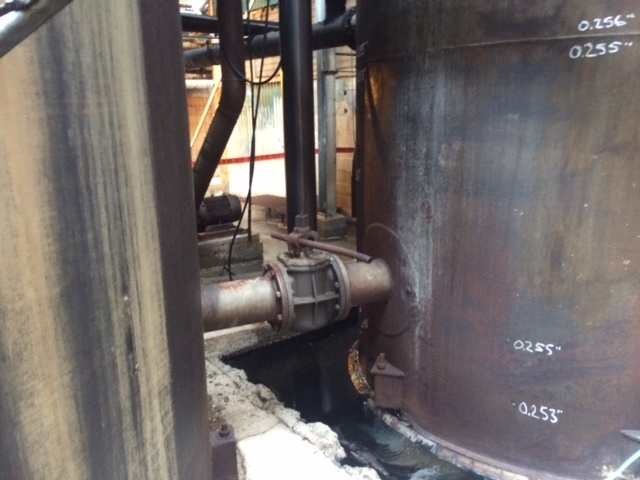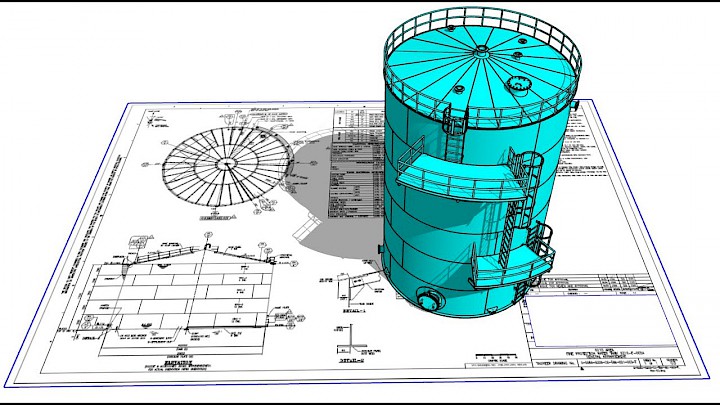A Detailed Take A Look At the Installment Refine of Welding Inspection Techniques
Welding assessment is an essential process that ensures structural stability and security. The installation of inspection methods involves several methodical steps, each indispensable to achieving trustworthy outcomes. From preparation and tool choice to conducting non-destructive and aesthetic examinations, each stage needs cautious interest. Understanding these procedures can significantly boost quality control in welding jobs. What obstacles arise in applying these strategies, and exactly how can they be properly addressed?
Recognizing the Value of Welding Evaluation
Welding examination is an important part of making certain structural integrity and safety and security in building and construction and manufacturing processes. This practice entails assessing welded joints for flaws, making certain that they fulfill certain criteria and policies. By systematically evaluating weld high quality, inspectors can identify issues such as cracks, spaces, and insufficient blend, which can endanger the toughness and toughness of frameworks.
The significance of welding examination expands past immediate safety concerns; it helps protect against expensive failures and possible hazards in the long term. Reliable inspection strategies foster compliance with market standards, thereby boosting the total reliability of bonded parts. Additionally, a robust inspection procedure contributes to preserving the credibility of building contractors and manufacturers, as it assures clients of the top quality of their jobs. Inevitably, comprehending the relevance of welding evaluation is essential for advertising safe building and construction methods and ensuring the durability of important infrastructure and products.
Choosing the Right Equipment for Inspection
When choosing the proper tools for evaluation, it is crucial to consider the specific requirements of the welding process and the materials involved. Various evaluation methods, such as aesthetic, ultrasonic, and radiographic testing, necessitate unique devices tailored to their one-of-a-kind demands. For aesthetic inspections, devices like magnifying glasses and calipers are essential for examining weld quality. Ultrasonic testing requires specialized devices qualified of transmitting and obtaining audio waves to identify internal defects. Radiographic testing, on the other hand, uses X-ray or gamma-ray sources together with sensitive movie or electronic detectors to expose incongruities.
Furthermore, individual protective devices (PPE) is important to guarantee the security of examiners throughout assessments. Choosing the right tools not only improves the accuracy of examinations however additionally adds to the overall stability and safety and security of the welding task. Consequently, an extensive understanding of available devices and their applications is vital for effective welding evaluation.
Getting ready for the Examination Refine
Prior to starting the evaluation procedure, it is important to establish a complete strategy that describes the range and goals of the evaluation. This plan should consist of details criteria that define what comprises appropriate top quality in the welding work being checked. Recognizing the relevant codes and criteria is crucial, as they will lead the assessment requirements and methods.
In addition, personnel associated with the assessment must be properly trained and accredited in welding assessment strategies to ensure integrity and accuracy. A list can be advantageous in organizing the various elements of the evaluation, varying from equipment readiness to environmental conditions that might impact the evaluation.

Logistical considerations such as scheduling, readily available resources, and communication in between team participants ought to be dealt with. By preparing systematically, inspectors can boost the effectiveness of the assessment and make certain that all vital aspects are properly considered prior to proceeding with the evaluation itself.
Carrying Out Aesthetic Evaluations

Conducting aesthetic evaluations is a vital step in the welding assessment procedure, requiring cautious prep work to ensure effective analysis. Assessors should be familiar with essential problem indicators that can signify possible problems in weld quality. By concentrating on these elements, one can improve the overall reliability of the inspection results.
Preparing for Visual Evaluation
Visual inspection functions as an essential first action in the welding evaluation process, guaranteeing that any kind of prospective issues are identified early (API 650 Welding Inspection). Proper preparation is vital for reliable visual evaluation. Examiners must begin by reviewing pertinent documentation, including welding treatments and specifications, to recognize the job requirements. They must collect necessary devices, such as multiplying glasses, flashlights, and ideal individual safety tools (PPE) An extensive examination of the assessment location is essential; inspectors need to confirm it is clean and cost-free of obstructions. Additionally, it is necessary to establish ideal lights problems to improve visibility of welds. By taking these preparatory steps, inspectors can produce an atmosphere for recognizing inconsistencies and guaranteeing the honesty of the bonded structures
Trick Problem Indicators
A complete read the article understanding of essential flaw indicators is vital during aesthetic evaluations to assure the top quality and safety and security of bonded joints. Inspectors must concentrate on certain indications such as fractures, porosity, damages, and incomplete combination. Splits may appear as sharp lines and can endanger structural stability. Porosity manifests as tiny openings that can deteriorate weld toughness. Undercuts, which are grooves along the weld edge, can result in stress focus. Insufficient combination indicates that the weld steel did not correctly bond with the base product, causing a weak joint. By methodically recognizing these flaws, assessors can identify compliance with sector criteria and enhance the total reliability of welded frameworks, eventually adding to more secure operational conditions.
Applying Non-Destructive Testing Strategies

Many non-destructive testing (NDT) techniques are indispensable to ensuring the integrity of welded structures without endangering their performance. These approaches allow inspectors to evaluate weld high quality and find issues without creating damage to the products being checked. Usual NDT techniques include ultrasonic testing, radiographic testing, magnetic fragment screening, and color penetrant testing. Each approach serves a specific purpose, addressing various kinds of flaws such as fractures, porosity, or insufficient combination.
Applying NDT techniques calls for a methodical strategy, starting with selecting the proper technique based upon the products and the nature of the weld. Educating employees in these you could try here strategies is necessary for precise results. Additionally, developing clear treatments and standards assurances uniformity throughout the assessment procedure. By integrating NDT right into the welding evaluation operations, companies can boost the reliability of their products while minimizing possible dangers connected with structural failures. This aggressive strategy inevitably adds to keeping security and quality criteria in welded building and constructions.
Recording and Analyzing Examination Outcomes
Reliable documentation and evaluation of assessment outcomes are crucial parts of the welding examination process. Accurate records of assessment searchings for work as a reference for quality assurance and conformity with sector criteria. API 650 Welding Inspection. Examiners should utilize structured types or digital platforms to log information such as the kind of weld, assessment techniques employed, and any type of discrepancies determined during the analysis
Detailed analysis is important when data is gathered. This entails contrasting outcomes versus developed requirements to recognize fads or recurring issues. Statistical devices may be utilized to measure issues and examine their influence on general weld quality.
In addition, reliable communication of findings to relevant stakeholders is important. Summaries and reports should be succinct and clear, highlighting key understandings and referrals for restorative actions. By systematically documenting and analyzing inspection outcomes, companies can cultivate continual renovation in welding techniques and enhance item stability.
Frequently Asked Concerns
What Credentials Are Needed to Come To Be a Welding Inspector?
To end up being a welding examiner, one generally needs pertinent certifications such as AWS CWI, together with experience in welding techniques, expertise of welding codes, and efficiency in examination methods to ensure quality and safety requirements.
Exactly How Often Should Welding Inspections Be Conducted?
Welding inspections must be conducted routinely, usually after each weld is finished, and regularly throughout projects. Factors such as project complexity, click here to read industry criteria, and regulative demands can influence the regularity of these evaluations.
What Is the Expense of Welding Inspection Services?
The expense of welding examination services varies substantially based upon variables such as job complexity, dimension, and area. Usually, prices vary from $100 to $150 per hour, with additional charges for specialized testing and qualifications.
Exist Certifications for Welding Inspectors?
Yes, there are numerous qualifications for welding inspectors, consisting of those supplied by the American Welding Society (AWS) and the International Institute of Welding (IIW) These accreditations ensure assessors possess the necessary abilities and expertise for effective examinations.

Exactly how Do I Select an Examination Company?
To pick an assessment provider, one must examine credentials, experience, sector credibility, and consumer testimonials. Furthermore, contrasting solution offerings and prices can help ensure the selected copyright satisfies particular project requires successfully.
Additionally, employees involved in the evaluation has to be properly educated and licensed in welding examination techniques to guarantee dependability and accuracy. Carrying out aesthetic assessments is an essential action in the welding inspection process, requiring cautious prep work to guarantee reliable examination. Aesthetic inspection offers as a vital first action in the welding inspection procedure, ensuring that any type of possible problems are identified early. Reliable paperwork and evaluation of assessment results are vital parts of the welding examination process. Welding evaluations need to be performed regularly, typically after each weld is finished, and regularly throughout projects.